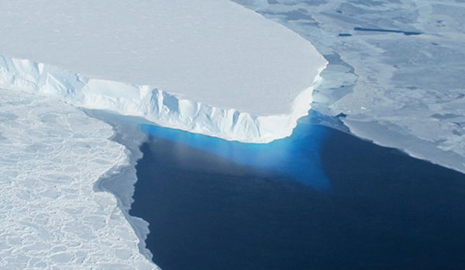New Research May Solve Puzzle in Sea Level

Instead of rising about six inches over the course of the 20th century, as previous research suggested, the sea actually rose by approximately five inches, the team from Harvard and Rutgers Universities found. The difference turns out to be an immense amount of water: on the order of two quadrillion gallons, or enough to fill three billion Olympic-size swimming pools.
If the findings stand up to scrutiny by other scientists, they could help resolve a longstanding conundrum in climate research. For years, when experts added up their best measurements of melt water from land ice and of other factors causing the sea to rise, the numbers fell a bit short of the rise that had been recorded at harbors around the world.
The fast-retreating Sheldon Glacier in Antarctica. A collapse of a polar ice sheet could result in a jump in sea level.
If the harbor measurements were right and the ocean really had two quadrillion gallons of extra water, where was it coming from? The discrepancy set off an intensive search for additional ice that might be melting from glaciers and ice sheets, or extra heat that might be causing ocean water to expand, and so on. To some scientists, the answers that emerged were never entirely satisfactory.
Now, in a paper published Wednesday by the journal Nature, the Harvard and Rutgers scientists applied advanced statistical techniques to the measurements taken at harbors. They found that previous research on that record had slightly overestimated the amount of sea-level rise in the 20th century. With their downward revision, the harbor record now matches the other records rather neatly.
“If it’s right, it’s pretty important,” said Peter U. Clark, a geologist at Oregon State University who studies sea level but was not involved in the new research. John A. Church, a scientist with Australia’s national scientific organization and a prominent researcher on sea level, echoed that view, but both men said they would like to see more details of the research before passing final judgment.
The main significance of the paper, if it holds up, may be to increase scientists’ confidence that they understand precisely why the ocean is rising — and therefore shore up their ability to project future increases.
A United Nations subcommittee led by Dr. Clark and Dr. Church said last year that if human emissions of greenhouse gases continued at a high level, the sea could rise as much as three feet by the end of this century, or possibly even more in the worst case. The research from Harvard and Rutgers has already set off efforts to develop new forecasts, with results due in the coming months.
The new paper was led by two young researchers, Carling C. Hay and Eric Morrow, working with two senior scientists, Robert E. Kopp of Rutgers and Jerry X. Mitrovica of Harvard.
Given that observers have been taking measurements at harbors for centuries, using devices called tide gauges, it might seem a simple problem to figure out how much the ocean has been rising. It is anything but simple, though: The tide-gauge record is plagued by gaps; the land to which many of the gauges are attached has itself moved over time; and factors like wind and ocean currents can cause variability of the sea level in particular locales. Moreover, the early harbor measurements were concentrated in Europe and the United States, leaving much of the world a blank.
The Harvard and Rutgers researchers believe their new statistical techniques do a better job than past research of accounting for the confounding variables, but they do not claim to have published the last word on the subject. “One of the main takeaway messages is that sea level is really complicated,” Dr. Hay said in an interview. “We don’t have a complete understanding of what’s been happening.”
If the paper represents an advance in climate science, that silver cloud comes with a dark lining. The new research confirms numerous previous estimates that the rate of sea-level rise jumped substantially toward the end of the 20th century. The ocean now appears to be rising at a rate of about a foot per century.
That would be worrisome enough, since mere inches of sea-level rise have been enough to force governments to spend billions of dollars to fight coastal erosion. But recent research suggests that the great ice sheets in Greenland and Antarctica are starting to break up as a result of global warming, a development that will send quadrillions of additional gallons of water pouring into the ocean. Many scientists see the recent jump in the rate as the beginning of a more troubling long-term acceleration that may ultimately threaten coastal cities around the world.
Already, tidal flooding is growing worse and causing severe problems in cities like Norfolk and Miami Beach, and in whole countries like Bangladesh.















































